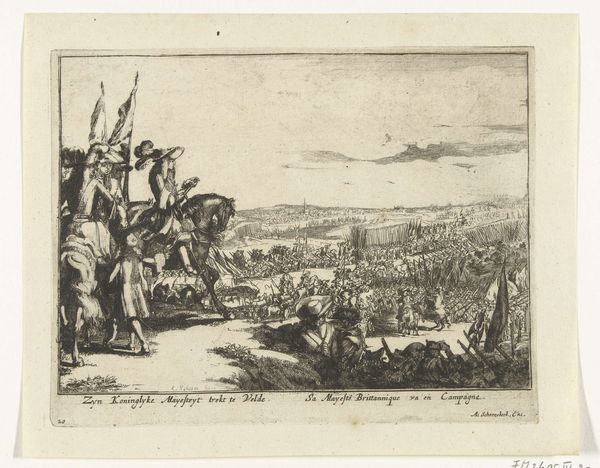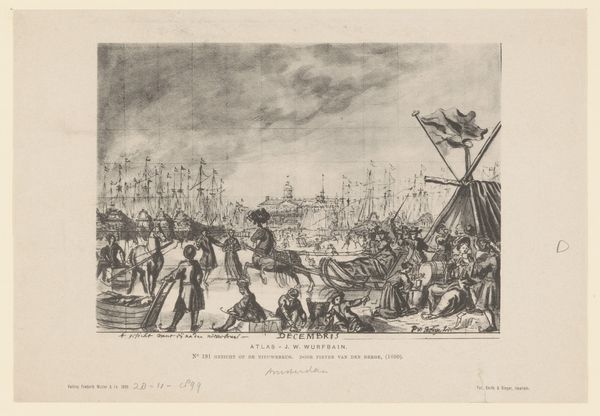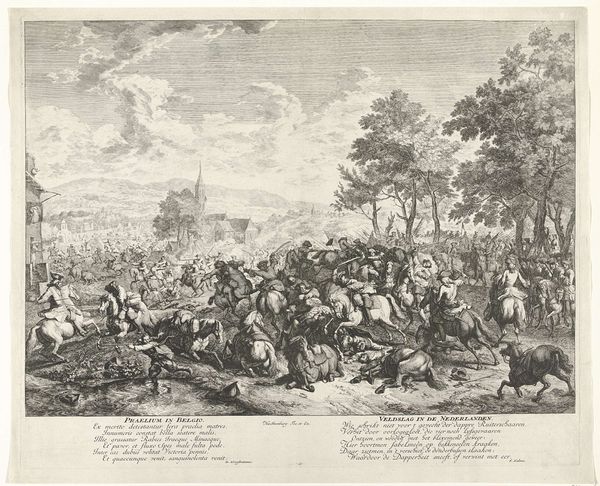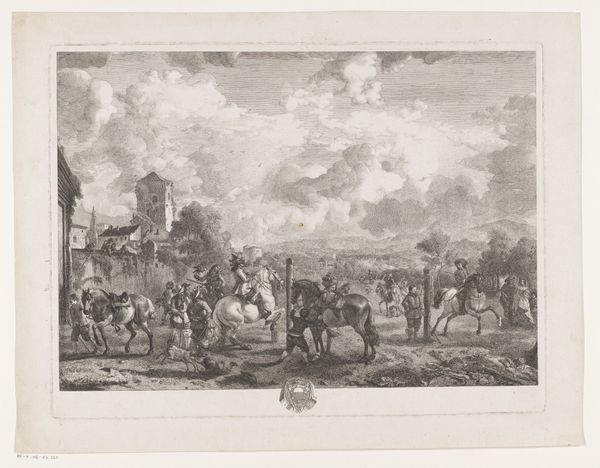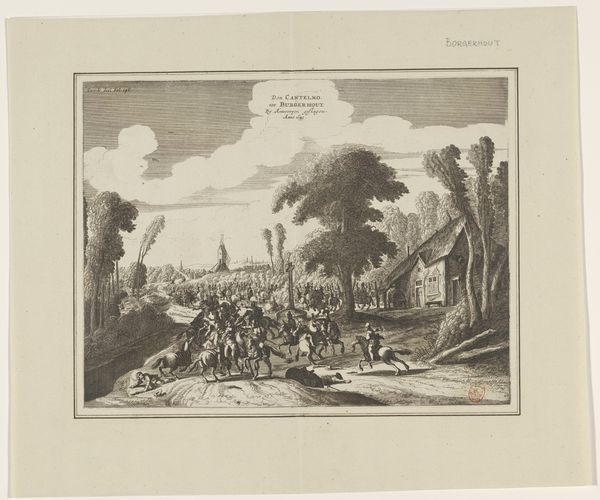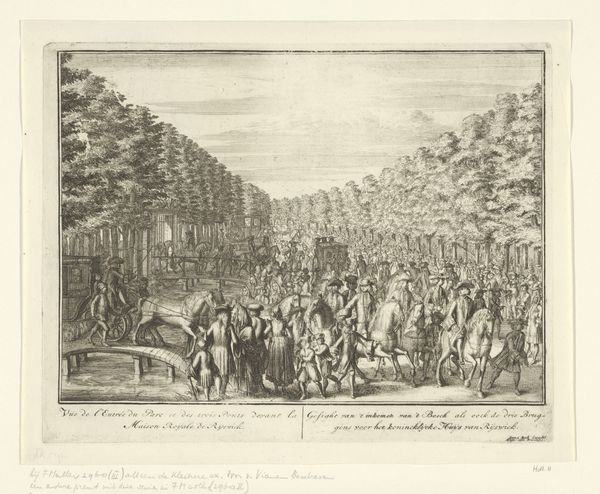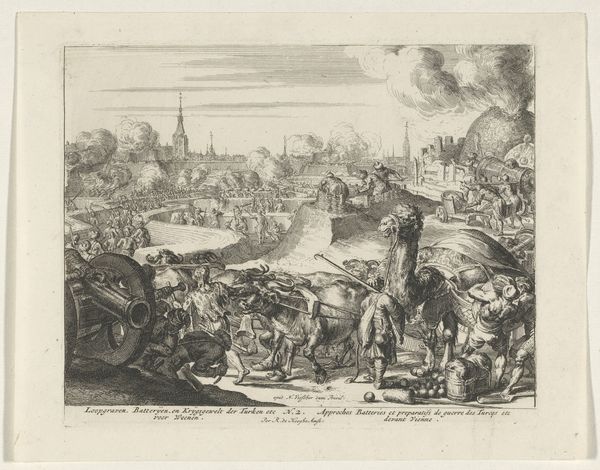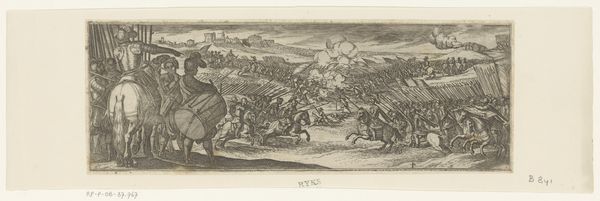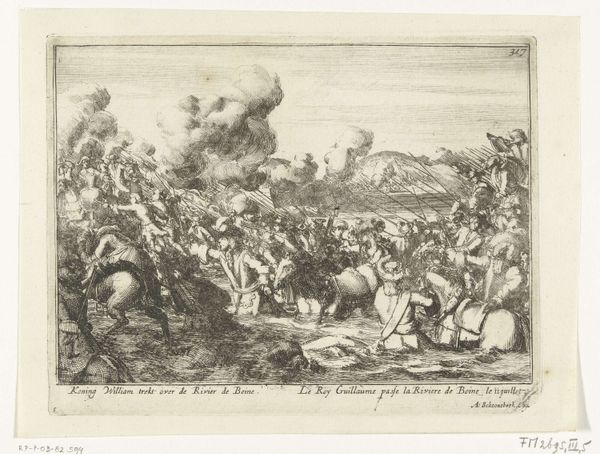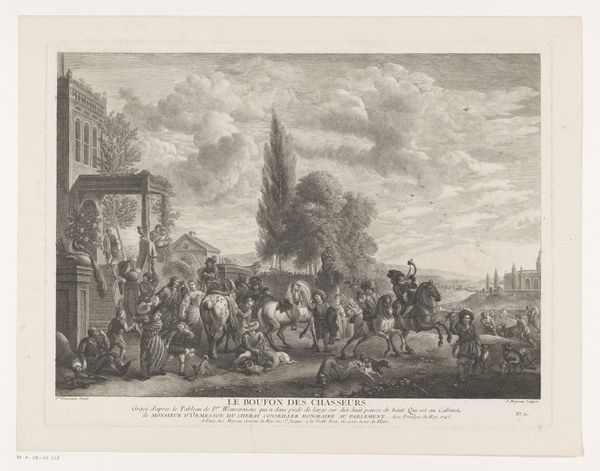
De verovering van Tabor, Leopoldstad en de pasbrug over de Donau door de Turken 1684
0:00
0:00
romeyndehooghe
Rijksmuseum
print, engraving
#
baroque
# print
#
old engraving style
#
figuration
#
line
#
cityscape
#
history-painting
#
engraving
Dimensions: height 164 mm, width 203 mm
Copyright: Rijks Museum: Open Domain
This print, made by Romeyn de Hooghe, shows the conquest of Tabor, Leopoldstad, and the bridge over the Danube by the Turks. As an etching, the image relies on the controlled corrosion of metal, using acid to bite lines into a prepared plate. In this case, the effect is dramatic, chaotic even. A scene of brutal warfare unfolds, achieved through the marshalling of countless tiny marks. Look closely, and you can see how the artist organized dense clusters of lines to describe the clamoring soldiers. The varying depth and width of the etched lines create a sense of depth, light, and shadow. The marks create not only the forms, but the atmosphere as well: the smoky haze of battle. The making of prints like these was, of course, a reproductive medium. But it also took enormous skill, and had its own distinct aesthetic. Appreciating the intense, methodical labor involved gives us insight into the print's purpose: to bring dramatic events into the homes of a wide public.
Comments
No comments
Be the first to comment and join the conversation on the ultimate creative platform.
